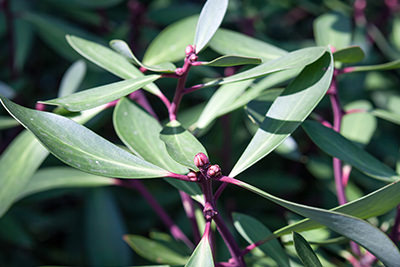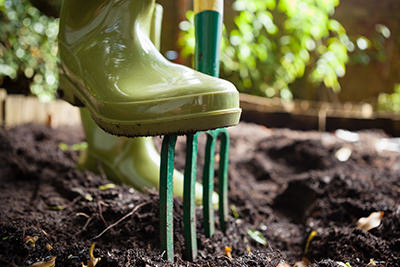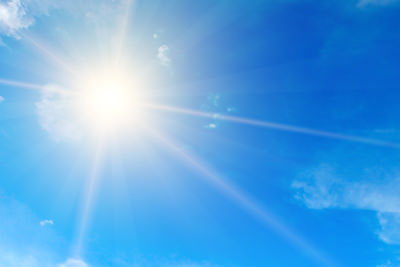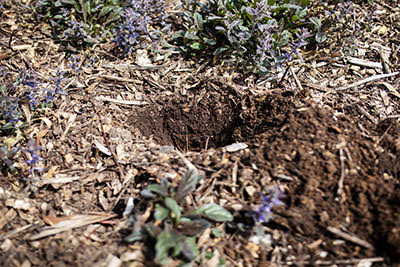LEARNING ACTIVITY
STORY
Jarrah and his friends are keen to get started on planting his favourite plants in his school’s Indigenous plant-use garden. Jarrah begins digging a hole but is struggling to break the ground. Adam arrives at the site to investigate. “What are you doing Jarrah? If you’re struggling to dig a hole, how do you think that poor little plant is going to grow in that ground? Come on, let’s slow down, take a seat and make a bit of a plan and assess the site first! We want our plants to thrive. This knowledge will be important to share with other young ones in years to come.”

This activity involves assessment and mapping of local environments to create a successful and thriving Indigenous plant-use garden.
To understand local perspectives and support these activities, we recommend reaching out to the local Traditional Owners and First Nations peoples community groups who can assist in knowledge sharing and understanding local land, histories and culture. This is an important consideration to ensure that any reconciliation initiatives are being driven in a local, meaningful way.
This learning activity is the fourth part of a sequence of 6 individual learning activities focused on creating an Indigenous plant-use garden. The order of these learning activities are: resources from the bush, vision, plant list, site assessment, planting and harvesting.
For children to:
- understand the importance of assessing local environments to create successful gardens
- learn planning, assessment and mapping skills
- learn how to choose the right plants for the right location, climate and season consolidate their learnings from completing previous learning activities.
This activity can be undertaken any time of the year. However, exploring your outdoor environment will need to account for the different variations in temperature and climate conditions. The location of the sun and shade will vary according to the time of day and the season.
Introduction
Assessing a suitable site for your Indigenous plant-use garden is important. It can be the difference between developing a successful thriving garden or creating a place that has constant ongoing issues.
In this activity, we will be assessing local areas so to locate the best site for an Indigenous plant-use garden. Working in teams will help build skills for working together in the development of the garden and foster self-reliance.
*Time allocation is dependent on site selection and travel time.
Checklist
Instructions
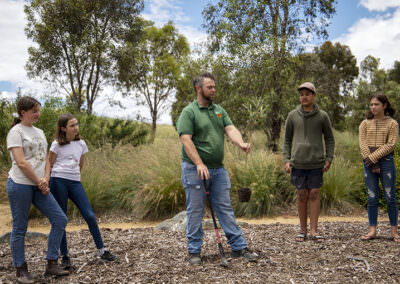
STEP 1
Understanding your site and the needs of your plants
Begin this activity at your location with an Acknowledgement of Country. By acknowledging the land, you are also making a promise that you will care for the land, the waterways, the plants and the animals.
Mapping and understanding the planned site will help you explore the possibilities and decide the best location for your Indigenous plant-use garden.
Consulting with your local Elders and First Nations peoples community is essential to learn about sacred sites and to include their perspective on appropriate sites.
Begin discussion by exploring what plants need to grow, including discussion around water, light and soil.
It is important to understand the type of soil existing in the planned site. Look at the Soil – more than just dirt learning activity to further understand different types of soil in local areas. Your local council or Landcare group may have more information.
Now think about the plants that you have included in your plant list activity and the growing conditions needed by these plants.
Does the planned site meet those conditions? How could you improve the conditions, e.g. water access, suitable soil?

STEP 2
Where is the best location for our plant-use garden?
It is important to evaluate the site to determine the best location for your plant-use garden. Consider how accessible is the area for construction and maintenance, how to access water, availability of sunlight, the soil type and topography, and if it is sheltered from extreme weather.
Drawing your base map (Bird’s eye view)
Take a large sheet of paper (or use a portable whiteboard) out to the site. Find out what direction North is and add that to your map.
Draw a grid using a ruler to help draw to scale. Plot out the permanent fixtures of the site (such as paths, fences, taps, established trees, etc) and measure the distances of those features from each other. Record their location on your map. This map will be the base for you to draw the garden design from the vision activity.
Taking photographs of the site from different directions are a great record of your progress too.
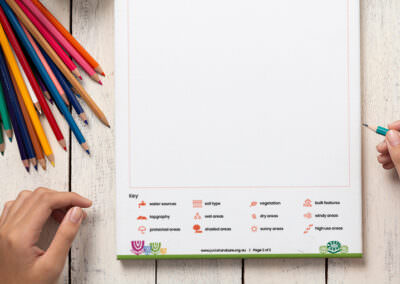
STEP 3
Drawing your vision
Using the base map and your vision, sketch out your garden design on the activity sheet.
This is best done in pencil so you can easily make changes. Think about the structures that you need to build such as paths or raised garden beds. You may like to use garden edging or mounds to represent the shapes of animals, a river or a significant landscape.
How could you tell a story or create a learning space for different people to use and enjoy? Consider what materials could be used to build these elements.
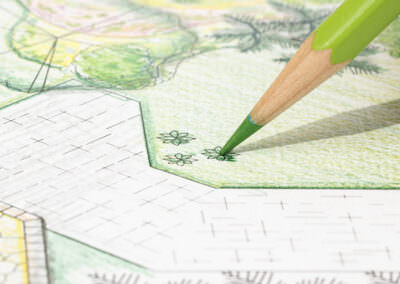
STEP 4
Finalise your design
Use your prior sketches and maps to create the final design of the new garden on your activity sheet.
Remember to include which direction your garden will face and the permanent fixtures of the space (such as existing trees, paths, taps, fences, etc). You may wish to use a key and symbols to show what you are drawing. Using different colours and symbols is a great way of mapping out your elements. In your key, describe what each of these elements are made of (e.g. wood, plant, bricks).
Extension Activity
Extension 1
Imagine you were a bird flying above the garden. Draw what it would look like when the garden is completed.
Extension 2
Imagine you were visiting the garden one day. What do you think the Land your garden is on would have looked like in the past? What does it look like now? What would it look like walking towards it? Draw the main entrance to the garden. What will it look like into the future (when you’re an adult)?
Curriculum and Framework Links
Check the curriculum authority for your state or territory for Aboriginal and Torres Strait Islander specific subjects. This may also include training organisations.
GEOGRAPHY
Year 7: ACHGK045
Year 8: ACHGK049
Year 9: ACHGK061, ACHGK062, ACHGK064, ACHGK067
Year 10: ACHGK070, ACHGK071, ACHGK072, ACHGK076
HISTORY
Year 7: ACOKFH003, ACDSEH031
Year 9: ACDSEH085, ACDSEH020
DESIGN & TECHNOLOGIES
Years 7 & 8: ACTDEK032, ACTDEK033
SCIENCE
Year 7: ACSSU112, ACSSU116, ACSHE223, ACSHE121
Year 8: ACSHE134, ACSHE226
Year 9: ACSSU176
VISUAL ARTS
Years 7 & 8: ACAVAM118, ACAVAR124
Years 9 & 10: ACAVAM125, ACAVAR131
EARTH & ENVIRONMENTAL SCIENCES
Year 11: ACSES011, ACSES040
Year 12: ACSES066, ACSES077, ACSES081
BIOLOGY
Year 11: ACSBL011, ACSBL019, ACSBL020, ACSBL009, ACSBL011
GENERAL CAPABILITIES
Critical and Creative Thinking
Personal and Social Capability
Ethical Understanding
Intercultural Understanding
CURRICULUM CONNECTIONS
Outdoor Learning
CROSS CURRICULUM PRIORITY
Aboriginal and Torres Straight Islanders Histories and Cultures
Sustainability
Reference List
Complete the Whose Country are you on? learning activity to determine the local First Nations peoples language group.
ONLINE RESOURCES
Commonground provides information on understanding Connection to Country and the importance of the land for Aboriginal and Torres Strait Islander peoples.
The Care for Country RAP (Reconciliation Action Plan) Action and Caring for country (Secondary) curriculum resource on the Narragunnawali platform provides resource material for students and teachers to build a personal sense of responsibility for respecting and caring for the Country/place around them, the while building an awareness and appreciation of Aboriginal and Torres Strait Islander contributions to sustainable land management.
Listen to episode 10 (26 minutes) on the Educator Yarns podcast from Koori Curriculum to hear about developing Aboriginal plant use gardens in educational settings with Adam Shipp.
WATCH
From Gardening Australia learn from Adam Shipp and explore his work and interest in bush tucker and bush medicine plants. (5 minutes 30).
NETWORK
We recommend reaching out to the Local Traditional owners and First Nations peoples community groups who can assist in knowledge sharing and understanding local land, language, stories and culture.
To reach out or find contacts in your local First Nations peoples community you could speak to parents of First Nations students, to an Indigenous Learning Officer (ILO) at your school, local Land Council or a local Landcare group.
We have some suggested organisations to approach listed on our Junior Landcare Community Page and in more detail within our Educator Notes.
Why not try one of our other Junior Landcare learning activities?
Love Letters to the Land
Biodiversity|First Nations Perspectives|Food Production|Waste Management
Creating a yarning circle: involving First Nations people
First Nations Perspectives
Creating a yarning circle: yarning circle activities
First Nations Perspectives
Creating a yarning circle: yarning and wellbeing
First Nations Perspectives
